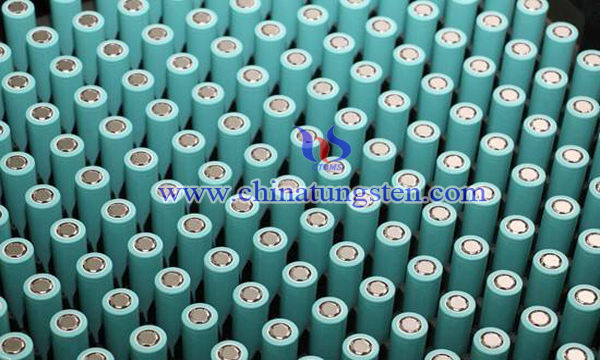Tungsten Trioxide As Anode Material for Lithium Ion Batteries
- Details
- Category: Tungsten Information
- Published on Friday, 04 October 2019 22:01
As an important n-type semiconductor oxide, tungsten trioxide (WO3) is widely used in chemical sensors, photocatalysis, energy conversion systems and other fields. Because of its large theoretical capacity (693 mAh/g), low cost and high safety (high melting temperature and mechanical stability), tungsten trioxide can also be used as negative electrode materials for lithium ion batteries.

However, when tungsten trioxide is used as negative electrode material, its structure and volume will change greatly during charging/discharging process, which will destroy the stability of electrode material, lead to mechanical smashing and loss of electronic connection between active material and collector, and ultimately make the cyclic performance of electrode decline. In order to overcome the problems existing in the existing technology, it is necessary to improve the preparation process of tungsten oxide to prepare composite materials with high specific capacity and good cycling performance. The following technical solutions can be tried for process improvement:
1)To prepare 0.5M C6H8O7·H2O distillation aqueous solution and 0.5M Na2WO4·2H2O distillation aqueous solution.
2)Mix the above solution in the ratio of C6H8O7·H2O:Na2WO4·2H2O=2:1, stirring at 25 ~℃ for 15 minutes.
3)The pH of the above mixed solution was adjusted by HCl solution with a concentration of 2M.
4)The homogeneous solution was poured into the PTFE lined high-pressure hydrothermal reactor, and the volume filling ratio was kept at 40%.
5)Put the sealed reactor into the homogeneous hydrothermal reactor, set the temperature parameter to 160 ℃, and the reaction time to 28 H.
6)After the reaction, the final reactant was cooled to room temperature, centrifuged and separated, and washed three times with deionized water and absolute ethanol, respectively. After centrifugation and washing, the powder was dried in a vacuum oven at 60 ℃ for 10 hours, and the final product was obtained.
The results show that the prepared products are monoclinic WO3 and WO2 without any other impurity peaks. The current density of 100mA/g circulate 500 times, and the efficiency can reach 95%.
- Tungsten Oxide Manufacturer & Supplier, Chinatungsten Online: www.tungsten-oxide.com
- Tungsten News & Prices of China Tungsten Industry Association: www.ctia.com.cn
- Molybdenum News & Price: news.molybdenum.com.cn
- Tel.: 86 592 5129696; Fax: 86 592 5129797; Email: sales@chinatungsten.com



 sales@chinatungsten.com
sales@chinatungsten.com